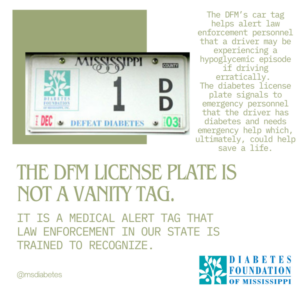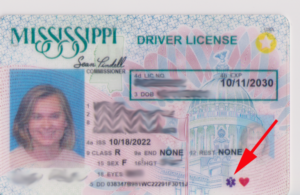Diabetic Alert Dogs can go to School!
 With the support of the Diabetes Foundation, House Bill 1405 passed in the legislature regarding Diabetic Alert Dogs in the school system, signed by Governor Bryant.
With the support of the Diabetes Foundation, House Bill 1405 passed in the legislature regarding Diabetic Alert Dogs in the school system, signed by Governor Bryant.
“Diabetic service dogs are just another fail safe in case technology doesn’t do its job. Then you have nature to back it up. Any potential safety net that you can provide for a child is well worth it” Dr. John Mayfield III.
For some people, dogs are merely pets – someone to play fetch and go on walks with. For others, their dogs are their best friends – someone to confide in and snuggle close to at night. For some, their dog is their protector and life-saver. He is their hero.
What makes a diabetes alert dog?
A dog’s scent detection capacity is 10 to 50+ times stronger than a human’s. Certain types of dogs are able to do more with their superior sense of smell than others. Scenting breeds take full advantage of their amazing capability to ‘taste’ smells, and the Diabetes Alert Dogs can categorize scents and associate smells with specific human responses.
 It’s because of their amazing scenting abilities that a DAD can detect a change in blood sugar levels in humans. We train them to not only recognize the change, but to react by alerting their humans by barking, nudging them, or bringing them a special item. The reaction, in real time, helps us know when a change is actively happening. To a person with diabetes, that real-time alert can be crucial.
It’s because of their amazing scenting abilities that a DAD can detect a change in blood sugar levels in humans. We train them to not only recognize the change, but to react by alerting their humans by barking, nudging them, or bringing them a special item. The reaction, in real time, helps us know when a change is actively happening. To a person with diabetes, that real-time alert can be crucial.
Many breeds are bred specifically for their sense of smell. While hunting dogs certainly qualify for the job, they aren’t the only breed that does it amazingly well. The best candidate for a DAD is one that scents well, has an above average work ethic and is able to manage their work drive to be calm enough to live within the parameters of a family setting.
Certain breeds fit all of those requirements easily, but all the individuals in a breed will not make a good diabetes alert dog. Variations of personality, temperaments, and drive even within a litter can be extreme. So while a breeder has a whole litter of pups, only 1, 2 or none may qualify for the demands of being a Diabetes Alert Dog.
For those living with diabetes, maintaining proper glucose levels can be challenging. Exercise, food, infections and stress are instrumental factors that will stimulate high (hyperglycemic) or low (hypoglycemic) blood sugars. Individual with diabetes must learn to maintain a healthy balance between these factors to prevent life-threatening consequences. Many people struggling to maintain healthy glucose levels choose to purchase diabetic alert dogs (DAD).


 The Mississippi driver’s license for drivers with diabetes has a purple star on the bottom of the license, indicating that the driver has diabetes. There is also a space on the license to list whether the individual is insulin dependent or takes oral medications.
The Mississippi driver’s license for drivers with diabetes has a purple star on the bottom of the license, indicating that the driver has diabetes. There is also a space on the license to list whether the individual is insulin dependent or takes oral medications.